Garje, Pooja Rajesh (2024) Skin Cancer Diagnosis using Image Augmentation and Machine learning approaches. Masters thesis, Dublin, National College of Ireland.
Preview |
PDF (Master of Science)
Download (2MB) | Preview |
Preview |
PDF (Configuration Manual)
Download (1MB) | Preview |
Abstract
Skin cancer is a serious illness, and diagnosing it early ensures timely treatment. But the way doctors usually diagnose skin cancer can sometimes be subjective, which means there’s a chance of misdiagnosis. Current machine learning approaches face significant challenges, such as handling imbalanced datasets where some skin cancer types are less represented. These methods also struggle with processing complex images, making it difficult to accurately classify lesions. To address these gaps, in this study we compare the effectiveness of Graph Neural Networks (GNN) against Convolutional Neural Networks (CNN), logistic regression and random forests methods in classifying skin cancer images. We tested these statistical models by applying them on Skin Cancer ISIC dataset using non-augmented and augmented datasets with specific focus on performance differences between these two types of datasets. These outcomes showed that the CNN model had 80% accuracy for non-augmented data sets performing better than other methods. The GNN based segmentation model realized potential in classifying images yet struggled to convert image to graphs thus resulting into only 48% accuracy on highest input resolution validation dataset. Other methods like Linear Regression and Random Forest did okay but didn’t perform as well as CNN. The models performed well on the original dataset but struggled with the augmented dataset. Therefore, the future work will focus on investigating advanced data augmentation methods, such as (GAN) Generative Adversarial Networks and (SMOTE) Synthetic Minority Over Sampling Technique, while also utilizing larger and more varied datasets. Additionally, there is potential in merging the strengths of both CNN and GNN and incorporating other data, such as patient history, to enhance diagnostic accuracy.
| Item Type: | Thesis (Masters) |
|---|---|
| Supervisors: | Name Email Rustam, Furqan UNSPECIFIED |
| Uncontrolled Keywords: | Skin cancer; image classification; Convolutional Neural Networks; Graph Neural Networks; data augmentation; Generative Adversarial Networks; Synthetic Minority Over-sampling Technique |
| Subjects: | Q Science > QA Mathematics > Electronic computers. Computer science T Technology > T Technology (General) > Information Technology > Electronic computers. Computer science Q Science > Life sciences > Medical sciences > Pathology > Tumors > Cancer R Medicine > Healthcare Industry Q Science > Q Science (General) > Self-organizing systems. Conscious automata > Machine learning |
| Divisions: | School of Computing > Master of Science in Data Analytics |
| Depositing User: | Ciara O'Brien |
| Date Deposited: | 18 Aug 2025 13:43 |
| Last Modified: | 18 Aug 2025 13:43 |
| URI: | https://norma.ncirl.ie/id/eprint/8566 |
Actions (login required)
 |
View Item |

 Tools
Tools Tools
Tools